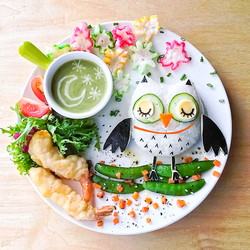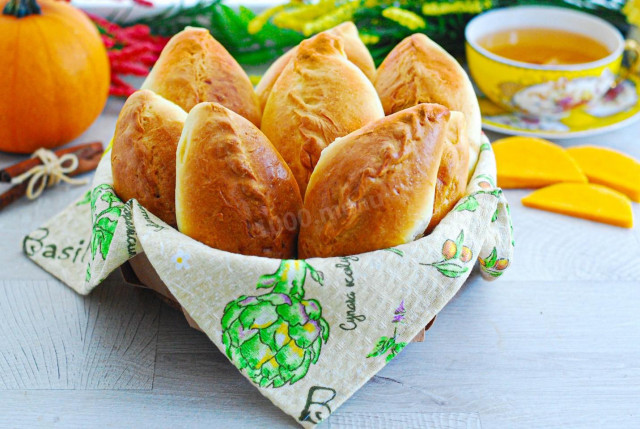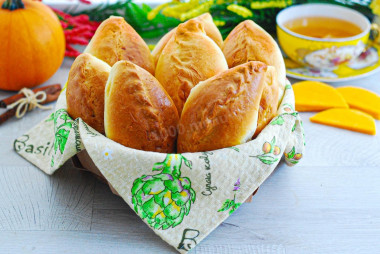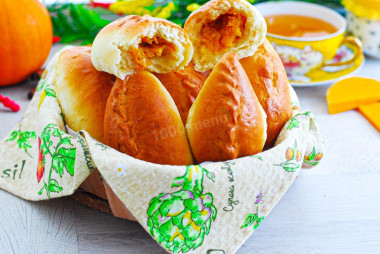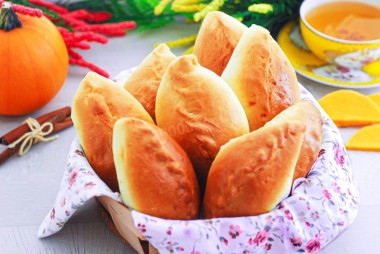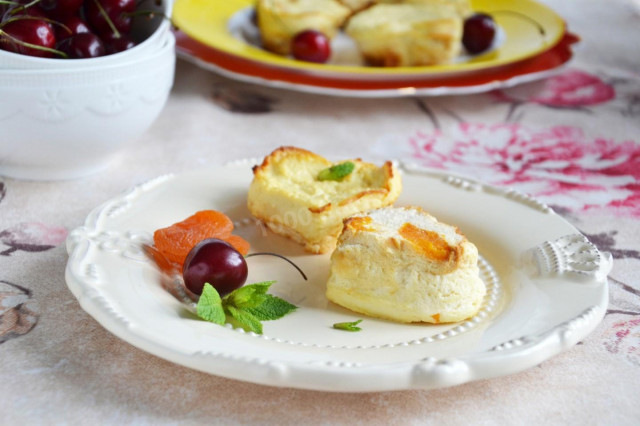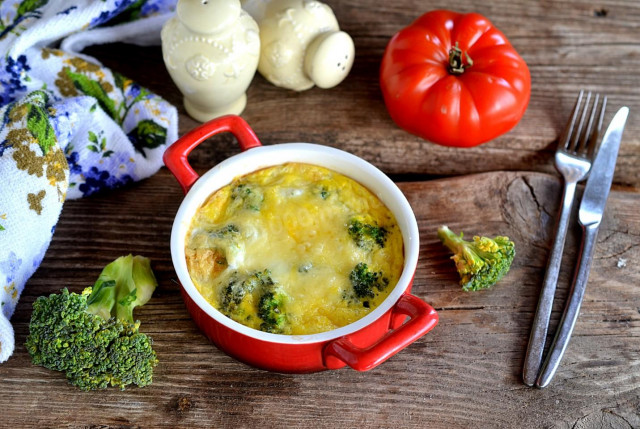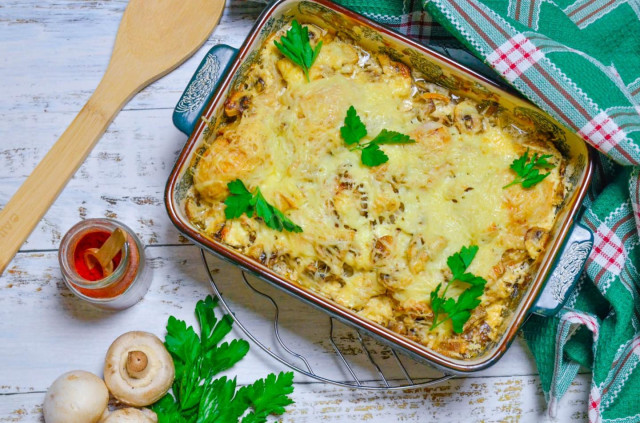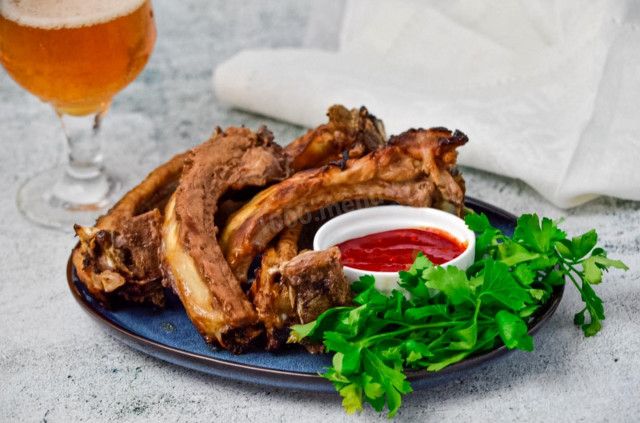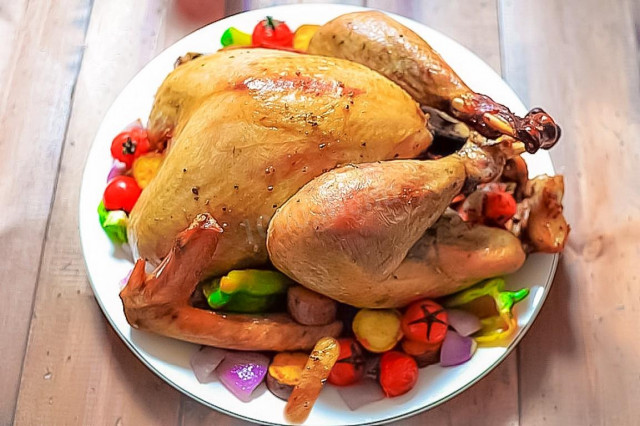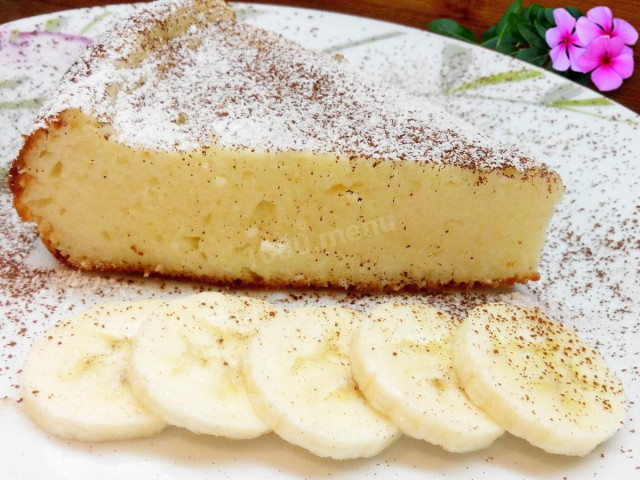Composition / ingredients
Step-by-step cooking
Step 1:
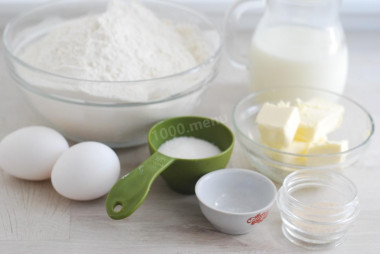
How to bake pumpkin pies? First, knead the yeast dough. Measure and prepare all the necessary ingredients. Be sure to sift the flour to saturate it with oxygen. Melt the butter in the microwave or in a water bath. Take the eggs out of the refrigerator in advance, they should be at room temperature.
Step 2:
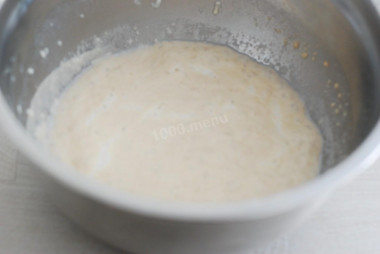
Prepare the sourdough. Heat the milk to 38 degrees. If the milk is too hot, the yeast will die, it will not work in the cold. Dissolve the dry yeast in it, add 2 tablespoons. l of flour and sugar. Stir and leave in a warm place without drafts for 15-20 minutes. After the specified time, a lush yeast cap should form on the sponge.
Step 3:
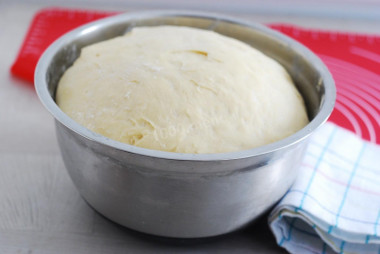
Add eggs, a pinch of salt, melted butter and flour to the sourdough. Add flour in parts, focusing on the consistency of the dough. Note that you may have more or less flour than indicated in the recipe, look at the consistency. The dough should be soft, elastic, not clogged with flour, not sticking to the hands. Cover the bowl with the dough with a towel and send it to a warm place for 1 hour. During this time, it will rise and increase in volume by 2 times.
Step 4:
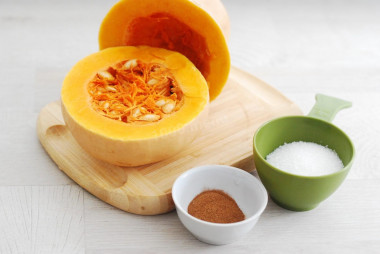
While the dough is coming, prepare the filling. How to make a filling for pumpkin pies? Prepare the ingredients. Wash the pumpkin, cut and peel the seeds and skin.
Step 5:
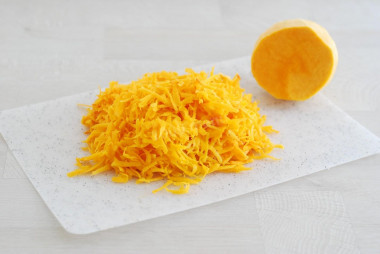
Grate the required amount of pumpkin on a coarse grater.
Step 6:
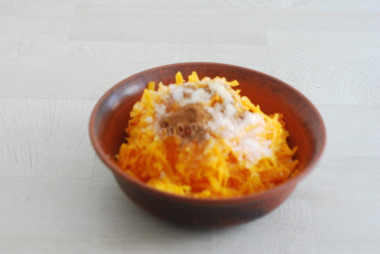
Transfer the grated pumpkin to a bowl. Add sugar and ground cinnamon. Adjust the amount of sugar to your liking. If desired, add a pinch of ground nutmeg. If you want, you can put out the filling a little (about 10-15 minutes) in a frying pan under the lid until the pumpkin is soft.
Step 7:
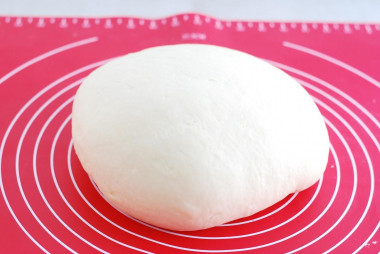
Put the dough on the work surface (I have a silicone mat). I didn't add flour, because the dough didn't stick to the table or to my hands at all. Remember. Divide into two parts. Roll one part into a sausage. Send the second one back to the bowl and cover it with a towel so that it does not get chapped.
Step 8:
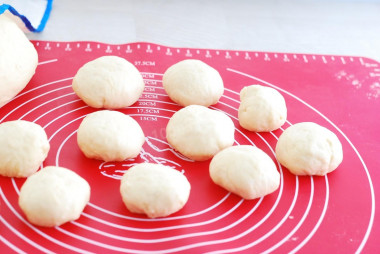
Divide the dough bar into equal pieces (approximately 10 pieces). Roll each piece into a ball and leave to rest for 2-3 minutes. Now mash each ball with your hands or roll it out with a rolling pin into a flat cake about 5 mm thick.
Step 9:
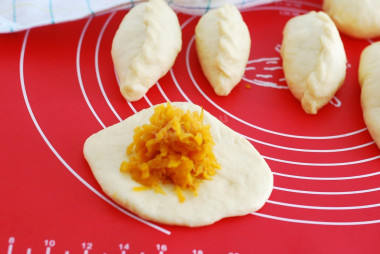
Put about 2 chines in the middle of each circle. l of filling. Form a patty by carefully pinching the edges of the dough from the middle to the edges. It is important that the filling does not get into the seam, otherwise the pies will burst when baking and flow. If you want, make a curly pattern on the seam of the dough.
Step 10:
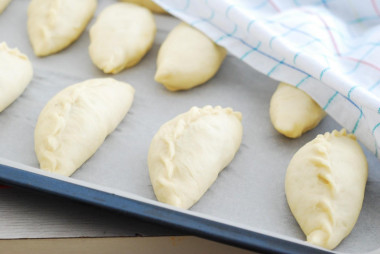
Place the formed pies on a baking sheet previously covered with baking paper. If desired, brush them on top with a mixture of one yolk and 1 tbsp. l of milk. Bake the pies for about 25-30 minutes in a preheated 180 degree oven. Determine the exact time and temperature of baking according to your oven.
Step 11:
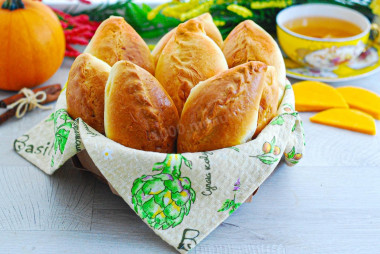
When the pies get an appetizing, beautiful "tan ", remove the baking sheet from the oven. Allow the baking to cool slightly, covering the baking sheet with a towel, then transfer to a basket or dish. Serve ready-made pies with tea or with warm milk.
While the pies are baking, you can make sweet syrup if desired. Mix 3 tablespoons. l of sugar, 3 table. water and cook on low heat with constant stirring for 1-2 minutes. Lubricate the finished pies with the finished syrup.
I personally really liked the rich yeast dough according to this recipe, but there are other options for making yeast dough, including lean ones. You can choose the recipe you like here
The liquid in which yeast is bred should be pleasant to the touch, no higher than 40 degrees. Why is this important? In a warm environment, yeast is well activated, in a hot one it will die, and in a cold one it simply will not work. To avoid unpleasant surprises, check the yeast before mixing with the rest of the ingredients. Pour a little warm milk into a bowl, stir in the yeast. Cover the bowl with a kitchen towel and put it in a warm place without drafts for 10-15 minutes. During this time, a foam yeast cap should appear on the surface of the sponge. If this did not happen, then the fermentation process has not started (the yeast is overdue or spoiled). In this case, it is worth taking other yeast, otherwise baking will not work.
Keep in mind that everyone's ovens are different. The temperature and cooking time may differ from those specified in the recipe. To make any baked dish successful, use useful information about the features of ovens !
Important! Using dry yeast, it should be borne in mind that they occur in two forms: active and instant (read the instructions carefully before use!).
Active dry yeast looks like beads or small balls. Before applying them, they must be brought out of the "sleep mode". To do this, the active yeast is diluted in warm sweet water, milk or whey. The formed bubbles, foam or "cap" indicate that the yeast is ready for further use. Active dry yeast must be brought to complete dissolution in the liquid, otherwise, due to the remaining grains, the dough may not rise and the baking will be spoiled (yeast grains that have not dissolved in the liquid and got into the dough will no longer disperse on their own, which means they will not work).
Instant dry yeast is easier to use. They do not need to be activated before use. Such yeast, along with other ingredients, is simply added to the dough. As a result, the baking time is reduced.
It should also be remembered that both types of dry yeast may differ in their activity from different manufacturers.
Caloric content of the products possible in the composition of the dish
- Whole cow's milk - 68 kcal/100g
- Milk 3.5% fat content - 64 kcal/100g
- Milk 3.2% fat content - 60 kcal/100g
- Milk 1.5% fat content - 47 kcal/100g
- Concentrated milk 7.5% fat content - 140 kcal/100g
- Milk 2.5% fat content - 54 kcal/100g
- Chicken egg - 157 kcal/100g
- Egg white - 45 kcal/100g
- Egg powder - 542 kcal/100g
- Egg yolk - 352 kcal/100g
- Ostrich egg - 118 kcal/100g
- Pumpkin - 29 kcal/100g
- Granulated sugar - 398 kcal/100g
- Sugar - 398 kcal/100g
- Butter 82% - 734 kcal/100g
- Amateur unsalted butter - 709 kcal/100g
- Unsalted peasant butter - 661 kcal/100g
- Peasant salted butter - 652 kcal/100g
- Melted butter - 869 kcal/100g
- Salt - 0 kcal/100g
- Wheat flour - 325 kcal/100g
- Dry yeast - 410 kcal/100g
- Ground cinnamon - 247 kcal/100g
